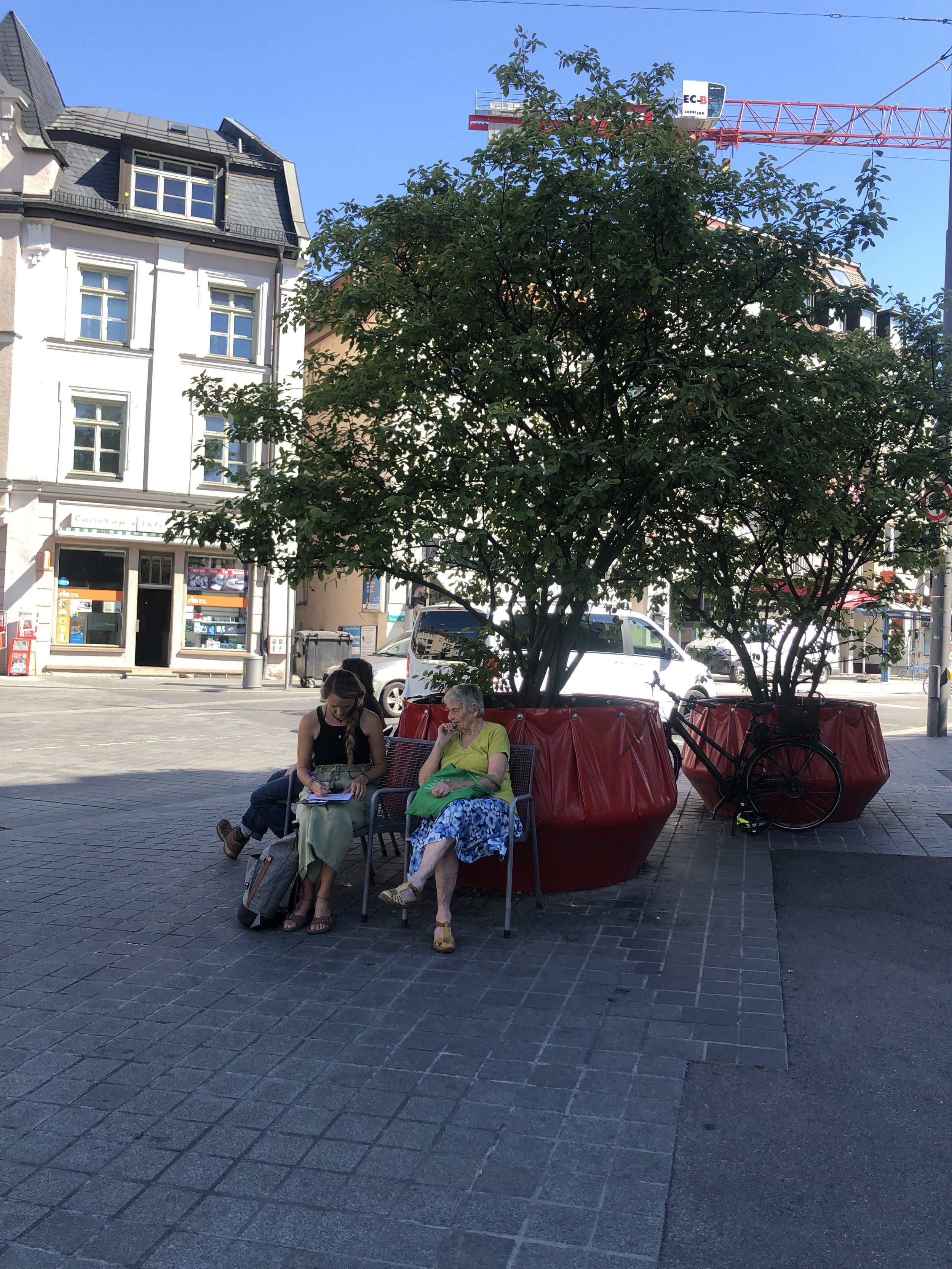STADTOASEN // CITY OASES
Terrestrial Laser Scanner (TLS)
ecological research
We use field inventories, terrestrial laser scanning, and microclimate monitoring to investigate the relationship between plant species composition, structural complexity, and meteorological aspects of urban green spaces.
Interviews with park and square visitors
social research
We use qualitative and quantitative approaches to investigate the health benefits (cooling, stress reduction, restoration, nature experience) of urban green spaces, and how such benefits are linked to natural elements of the space.
Crowd sourcing favorite places in Munich
participatory research
We use crowd sourcing and citizen science to investigate how citizens use urban green spaces, and what citizens want from urban green spaces in the context of climate change and health benefits.
Cities will be particularly affected by the impacts of climate change, e.g. due to heavy precipitation or longer periods of heat. In this context, urban green spaces including trees, park areas and forests will become enormously important in several aspects. Depending on their vegetation structure and size, these green spaces have different biophysical effects and contribute, among other things, to temperature mitigation. In recent years, the urban ecological importance of urban green spaces has been linked to aspects of biodiversity and urban climate adaptation, as well as to the health of people in the city, whose demand for recreation in urban green spaces is increasing. Urban green space can mitigate different impacts of climate change in cities, contributing directly and indirectly to the health of residents.
The StOasenWandel project focuses on the social-ecological, health- and climate-related importance of small green spaces. The importance of size and structure are investigated in terms of micrometeorological and health factors. We hypothesize that many small urban green spaces (<1ha) in our growing and warmer cities play an important role in urban climate adaptation and health care, and in aggregate have a greater impact than one large space.
The aim of the project is to investigate which effects urban green spaces can have on the immediate environment and human health, and which vegetation structures are beneficial for preventive health care and the measured and perceived microclimate. We intend to derive evidence-based recommendations for future green space development.
Project duration: 05.2022 – 05.2025
Partners: Professorship for Forest and Agroforestry Systems (Annighöfer) and Chair for Forest and Environmental Policy (Suda); Team: Peter Annighöfer, Michael Suda, Sophie Arzberger, Stefanie Burger, Birgit Probst, Vera Knill, Yannik Hecher, Sebastian Speth
Funding: Bayerisches Ministerium für Gesundheit und Pflege (StMGP), and Bayerisches Ministerium für Umwelt und Verbraucherschutz (StMUV)
Contact: Stefanie Burger (Project researcher; stefanie.burger@tum.de) and Monika Egerer (PI; monika.egerer@tum.de)
Website: www.stoasen.de




